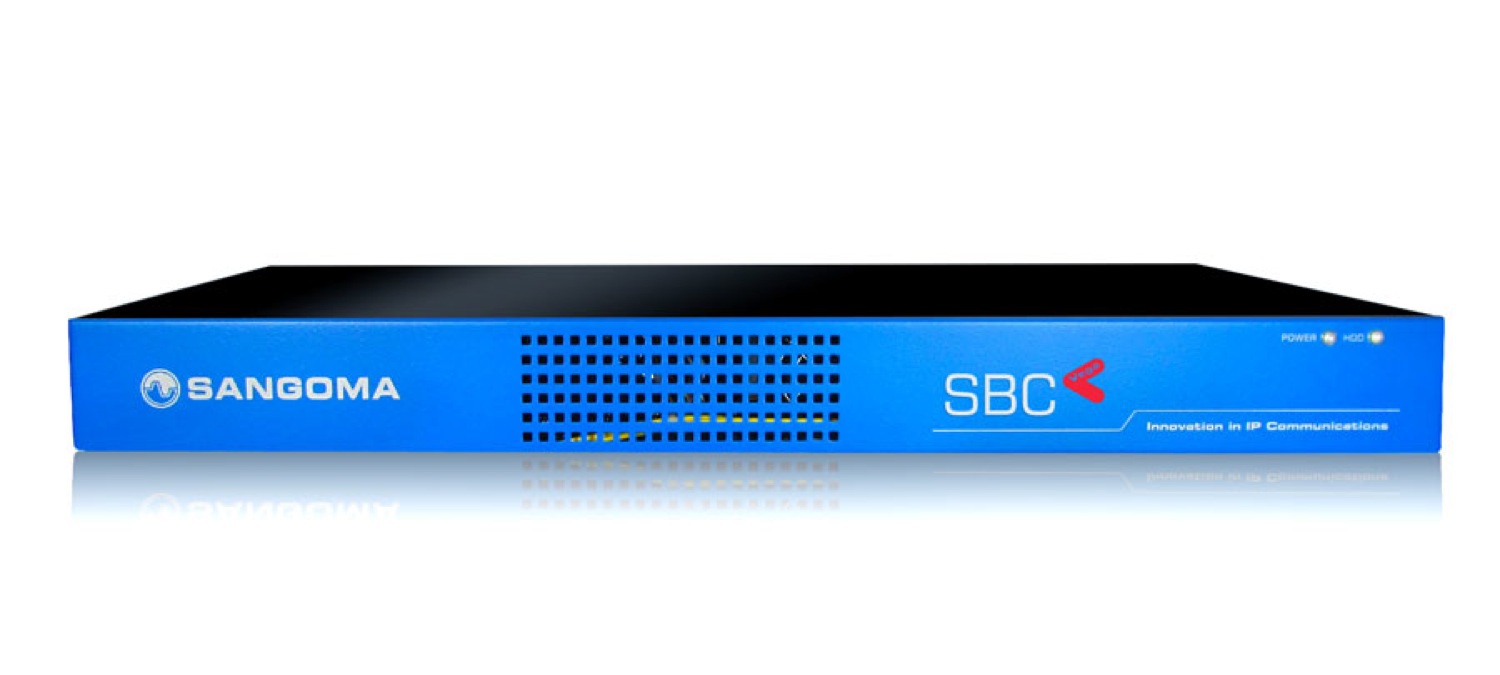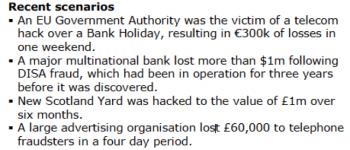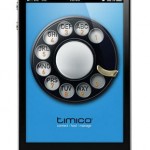Major leaps in technology allow business phones — the desktop VoIP telephone — to serve a rapidly growing range of needs.
Trefor.net welcomes “VoIP Week” contributor Jeff Rodman, Polycom‘s Chief Technology Evangelist. Since co-founding the company in 1990 Jeff has been instrumental in the realization of Polycom’s iconic products for voice, video, network communications, and other media.
The death of the desktop telephone has been predicted for decades. Technology has steadily advanced, business processes and communications needs have grown, and it’s actually rather surprising how that stodgy old friend the “desktop phone” has prospered. Look at its challenges: the PalmPilot, mobile phones and the Blackberry first, then on to Skype and other soft clients, unified information systems, mobile iOS, Windows and Android devices, teleworking, personal video calling, open-air workspaces, multiple Unified Communications and Control (UC&C) platforms, and the internet itself. And, of course, an always-growing need for specialised applications and consistent, efficient globalisation.
The desktop device remains firmly in place, though. What has actually happened is something that many didn’t see coming, yet is obvious in hindsight. The question was never really about when the desktop telephone would disappear, but rather how changing work needs and new technologies would shape its evolution.
“Personal transportation” did not disappear when Karl Benz introduced the Motorwagen in 1885, it evolved as technology moved beyond the horse. A broad range of personal transportation solutions emerged, from the motorbike to the motorhome, addressing such specific needs as the sedan, snowmobile, and all-terrain vehicle along the way. Similarly, the phone (which we might describe as a personal desktop live communications device) is not vanishing. It is, rather, becoming even more critical to business success, as it has advanced from its roots. Once merely the “black phone on a desk,” there is now a range of devices to cover an assortment of user needs from a basic desktop VOIP telephone to the rich integration of essential capabilities known as the Business Media Phone.
What is a phone today?
Modern business phones exist in many forms, but the most basic requirements they all share are durability and reliability. They are always on and ready for use, unlike cell phones, which require charged batteries and wireless connectivity. Similarly, soft clients or UC clients running on PCs must be running to accept calls or place calls. A phone is one thing we expect to always work, which is why they have traditionally been built like “brick houses,” never knowing who might slam down the handset, douse them with tea or drop them off of a tall table. Any phone is designed for a tightly defined set of uses, which it flawlessly performs. Whether a particular phone today supports only voice or a full bouquet of functions and applications, it is expected to do those jobs with unblinking confidence. As we will see, any device that might hope to take its place must be measured against this simple but essential standard of absolute reliability and responsiveness, one which we might call the “phone’s prime directive.”
Beyond this, major leaps in technology allow business phones to serve a rapidly growing range of needs. The adaptations to serve these can be broadly categorised in three directions— extensibility, unification, and media. Manageability and reliability, looking at the centralized support model removes the hassles from the end-user who can simply use it and doesn’t have to worry about software updates or configurations.
Extensibility
Whether PSTN, SIP, or some proprietary network, the most basic analogue phone needs only a handset and a phone cable. The underlying vision usually supports a much larger assortment of abilities, though, and different models within the same family will express different combinations. These can take the form of additional interfaces to support Bluetooth, wired, and DECT headsets, memory stick hosting to preserve conference audio, additional Ethernet jacks, “sidecar” accessories to provide one-touch selection of additional lines, and even add-on interactive HD video. Each of these extends the usefulness of a phone, by enabling future enhancement without burdening the initial purchase. The extent to which a phone can support this kind of evolution is one measure of its suitability for an organisation.
Unification
Although the range of abilities, environments, and platforms that might be supported by contemporary phones is much broader than it was just a few years ago, the user still expects them to work together simply and reliably. This means that functions must tie together transparently, and any complexity has to be neatly and efficiently concealed. The functions performed by the desktop phone must be able to connect to a wider set of networks; but more than that, the user’s experience has to remain consistent—a user cannot be confronted with wildly different behaviour just because, for example, SIP dialling and the Microsoft Lync platform are both in use within the organisation. For this reason, one essential requirement of a properly-implemented phone is that it retains compatibility with existing infrastructure. This means that interoperability among different UC and UC&C host platforms and simple, predictable behaviour is essential for a successful phone, whether it is a basic voice phone with enterprise directory access, or a full-fledged Business Media Phone, such as the Polycom range of VVX Business Media Phones.
Media
Today, conversations can take place among almost any combination of styles and environments (i.e., HD or narrowband voice, accompanying charts and presentations, HD video, small-screen video from a handheld device, or even Immersive Telepresence rooms). They can be between two people in only two places, or among a gathering of groups and individuals everywhere (i.e., at airports, desks, homes, workspaces and conference rooms).
Although there is today a growing expectation that participants will join meetings with video, a phone must give its user a clear perception of the meeting and also present its user as a competent, efficient participant in that meeting, whether the user has joined with video or only audio. This means that whether sitting in open spaces or quiet offices, phones must reject surrounding noise while allowing their users to speak clearly. Further, if video capable, they must send a clear, high-fidelity image even if their display is compact. Just as a user does not want to sound like they’re on a muffled Smartphone, they also want to look as if they’re working from a professional HD video system, not shaking and blurry with a precariously- mounted camera.
Conclusion
The desk phone has changed and today it does enormously more than it did in the past, yet it remains a keystone of effective business operation. By providing consistency, reliability, comfort, and an easily managed connection, there are few tools in business that prove their continuing worth as well, or as quickly, as well-built table-top voice or Business Media Phones.
Over the past three years, the tables have turned. Savings that some organisations had expected to gain by leveraging employee BYOD’s have evaporated as enterprises are often now the ones who buy those smartphones for employees, often at considerably higher life-cycle cost than a well-built desk phone. This is one reason that we’re really not entering a “smartphone world,” and why the market for real desktop phones of all descriptions continues to grow. Organisations that experiment with smartphones discover that they’re no panacea, and they return to the purpose-built and IT-friendly desktop phone — and especially to its powerful newer sibling the Business Media Phone — as the tool for doing what they do best, communications without compromise…
The bottom line is that regardless of what the final decision for each employee turns out to be, the first step toward making correct choices is to carefully investigate, taking care to understand what is important to the organisation and to each user, and get the facts about the options available when making a long-term investment such as a phone system.
This is a VoIP week post on trefor.net. Check out other VoIP themed posts this week:
Why are major telcos afraid of encrypted VoIP? by Peter Cox
Emergency calls and VoIP by Peter Farmer
VoIP, the Bible and own brand chips by Simon Woodhead
Why the desktop VoIP telephone isn’t going away by Jeff Rodman
Small business VoIP setup by Trefor Davies
VoIP fraud-technological-conventionality-achieved by Colin Duffy







 Philip Davies MP is a libertarian Conservative and as a result is one of my favourite MPs. This means he’s often at polar opposites to Her Majesty’s Opposition and an uncomfortable bed fellow with their coalition partners. That makes it even more incredible that the amendment was gladly supported by both the Shadow Minister, Helen Goodman MP and Julian Huppert MP (Liberal Democrat Member for. Cambridge and a good advocate for the technological community). A rare moment of cross party backbench support that, alas, was defeated without Government support, which is still backing the self regulation horse.
Philip Davies MP is a libertarian Conservative and as a result is one of my favourite MPs. This means he’s often at polar opposites to Her Majesty’s Opposition and an uncomfortable bed fellow with their coalition partners. That makes it even more incredible that the amendment was gladly supported by both the Shadow Minister, Helen Goodman MP and Julian Huppert MP (Liberal Democrat Member for. Cambridge and a good advocate for the technological community). A rare moment of cross party backbench support that, alas, was defeated without Government support, which is still backing the self regulation horse.


























